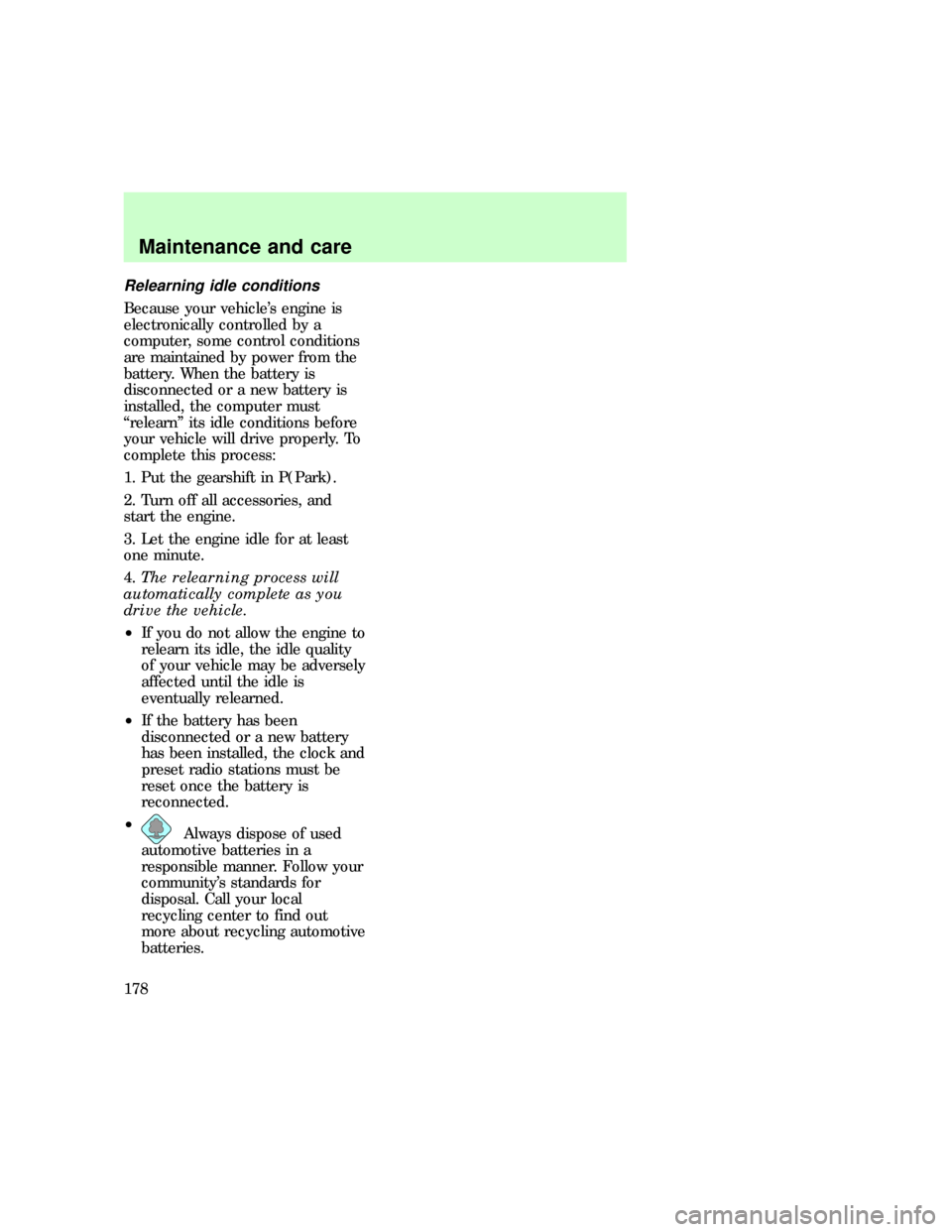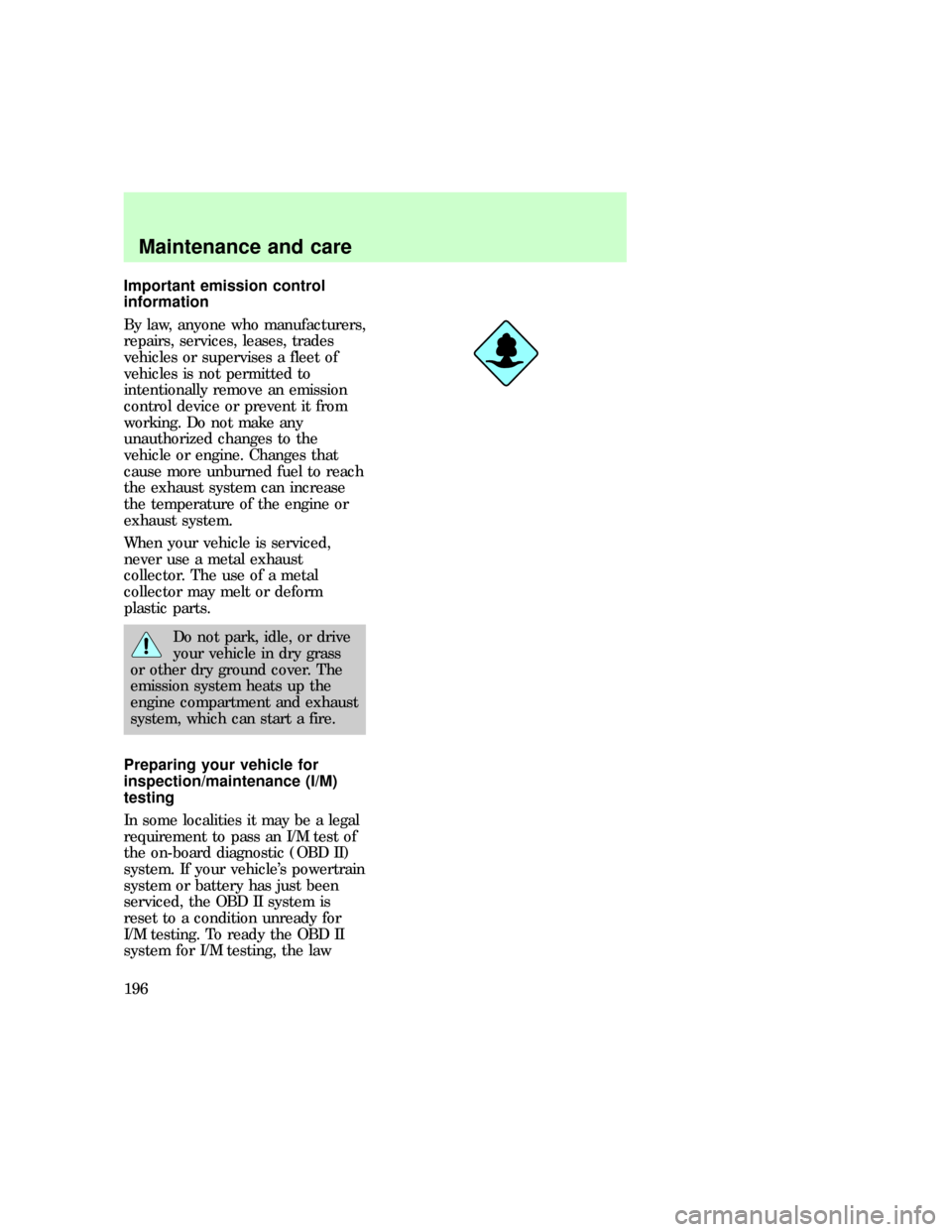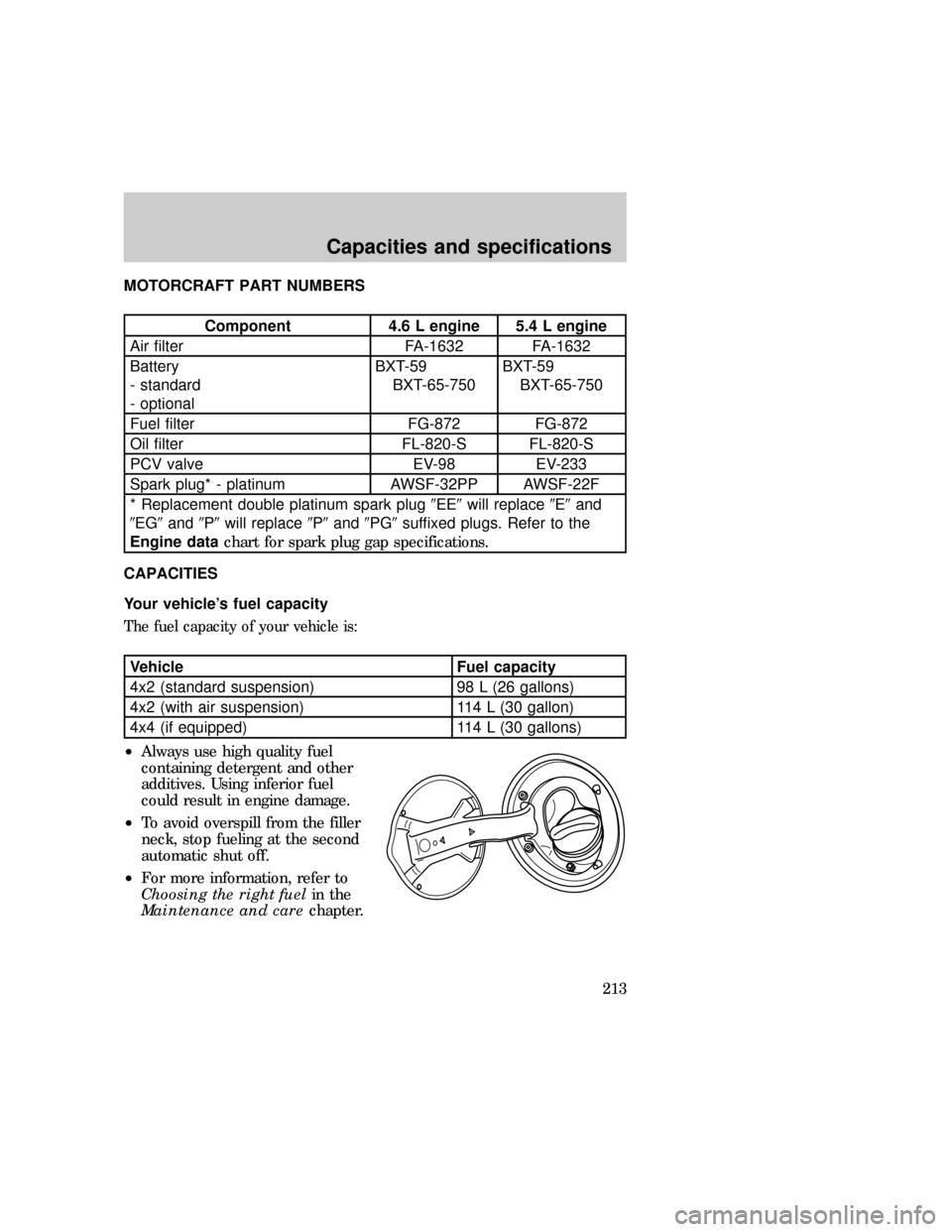Page 154 of 224

Precautions when servicing
your vehicle
Be especially careful when
inspecting or servicing your
vehicle. Here are some general
precautions for your safety:
²Do not work on a hot engine.
²If you must work with the
engine running, avoid wearing
loose clothing or jewelry that
could get caught in moving
parts. Take precautions with
long hair.
²Do not work on a vehicle with
the engine running in an
enclosed space, unless you are
sure you have enough
ventilation.
²Keep all lit cigarettes, open
flames and other lit material
away from the battery and all
fuel related parts.
If you disconnect the battery, the
engine must ªrelearnº its idle
conditions before your vehicle will
drive properly, as explained in
Batteryin this chapter.
Service recommendations
To help you service your vehicle:
²We highlight do-it-yourself items
in the engine compartment for
easy location.
²As possible, we design parts that
can be replaced without tools.
com_precautions_servicing.02
com_service_recommendations.01
Maintenance and care
155
Page 157 of 224
Working with the engine on
1. Set the parking brake fully and
ensure the gearshift is securely
latched in P (Park).
2. Block the wheels to prevent
your vehicle from moving
unexpectedly.
Do not start your engine
with the air cleaner
removed and do not remove it
while the engine is running.
IDENTIFYING COMPONENTS IN
THE ENGINE COMPARTMENT
4.6 / 5.4 L engine
1. Battery
2. Automatic transmission dipstick
12
107869
345
exd_title_engine_compartments
exd_2_engine_compartment
Maintenance and care
158
Page 175 of 224
TRACTION-LOK REAR AXLE (IF
EQUIPPED)
This axle provides added drive
away traction on slippery surfaces,
particularly when one or more
wheels are on a surface with poor
traction.
Extended use of other than
matching size tires on a
Traction-Lok rear axle could result
in a permanent reduction in
effectiveness. This loss of
effectiveness does not effect
normal driving and should not be
noticeable to the driver.
To avoid injury, never run
the engine with one wheel
off the ground, such as when
changing a tire.
BATTERY
If the original equipment
maintenance-free battery needs
replacing, it may be replaced with
a low-maintenance battery. For
information on replacement
batteries, refer toMotorcraft part
numbersin theCapacities and
specificationschapter.
The gases around the
battery can explode if
exposed to flames, sparks, or lit
cigarettes. An explosion could
result in injury or vehicle
damage.
exd_battery
Maintenance and care
176
Page 176 of 224
Batteries contain sulfuric
acid which burns skin,
eyes, and clothing.
Servicing your battery
A low-maintenance replacement
battery has removable vent caps
for checking the electrolyte level
and adding water. Check the
electrolyte level every 24 months
or 40,000 km (24,000 miles) in
average temperatures below 32ÉC
(90ÉF).
Keep the electrolyte level in each
cell up to the level indicator. Do
not overfill.
If the level gets low, refill the
battery with distilled water. If the
battery needs water quite often,
have the charging system checked
for a possible malfunction.
Your vehicle is equipped with a
battery saver feature designed to
prevent your battery from
accidental wear down due to doors
left ajar. For information on this
system, refer to theControls and
featureschapter.
exd_servicing_battery
Maintenance and care
177
Page 177 of 224

Relearning idle conditions
Because your vehicle's engine is
electronically controlled by a
computer, some control conditions
are maintained by power from the
battery. When the battery is
disconnected or a new battery is
installed, the computer must
ªrelearnº its idle conditions before
your vehicle will drive properly. To
complete this process:
1. Put the gearshift in P(Park).
2. Turn off all accessories, and
start the engine.
3. Let the engine idle for at least
one minute.
4.The relearning process will
automatically complete as you
drive the vehicle.
²If you do not allow the engine to
relearn its idle, the idle quality
of your vehicle may be adversely
affected until the idle is
eventually relearned.
²If the battery has been
disconnected or a new battery
has been installed, the clock and
preset radio stations must be
reset once the battery is
reconnected.
²
Always dispose of used
automotive batteries in a
responsible manner. Follow your
community's standards for
disposal. Call your local
recycling center to find out
more about recycling automotive
batteries.
exd_air-filter
Maintenance and care
178
Page 195 of 224

Important emission control
information
By law, anyone who manufacturers,
repairs, services, leases, trades
vehicles or supervises a fleet of
vehicles is not permitted to
intentionally remove an emission
control device or prevent it from
working. Do not make any
unauthorized changes to the
vehicle or engine. Changes that
cause more unburned fuel to reach
the exhaust system can increase
the temperature of the engine or
exhaust system.
When your vehicle is serviced,
never use a metal exhaust
collector. The use of a metal
collector may melt or deform
plastic parts.
Do not park, idle, or drive
your vehicle in dry grass
or other dry ground cover. The
emission system heats up the
engine compartment and exhaust
system, which can start a fire.
Preparing your vehicle for
inspection/maintenance (I/M)
testing
In some localities it may be a legal
requirement to pass an I/M test of
the on-board diagnostic (OBD II)
system. If your vehicle's powertrain
system or battery has just been
serviced, the OBD II system is
reset to a condition unready for
I/M testing. To ready the OBD II
system for I/M testing, the law
exd_im_testing
Maintenance and care
196
Page 212 of 224

MOTORCRAFT PART NUMBERS
Component 4.6 L engine 5.4 L engine
Air filter FA-1632 FA-1632
Battery
- standard
- optionalBXT-59
BXT-65-750BXT-59
BXT-65-750
Fuel filter FG-872 FG-872
Oil filter FL-820-S FL-820-S
PCV valve EV-98 EV-233
Spark plug* - platinum AWSF-32PP AWSF-22F
* Replacement double platinum spark plug9EE9will replace9E9and
9EG9and9P9will replace9P9and9PG9suffixed plugs. Refer to the
Engine datachart for spark plug gap specifications.
CAPACITIES
Your vehicle's fuel capacity
The fuel capacity of your vehicle is:
Vehicle Fuel capacity
4x2 (standard suspension) 98 L (26 gallons)
4x2 (with air suspension) 114 L (30 gallon)
4x4 (if equipped) 114 L (30 gallons)
²Always use high quality fuel
containing detergent and other
additives. Using inferior fuel
could result in engine damage.
²To avoid overspill from the filler
neck, stop fueling at the second
automatic shut off.
²For more information, refer to
Choosing the right fuelin the
Maintenance and carechapter.
exd_motorcraft_parts_numbers
exd_fuel_capacity
exd_refill_capacities
Capacities and specifications
213
Page 221 of 224

Air bag supplemental restraint
system ..........................................87
and child safety seats ..............88
description ................................87
disposal ......................................91
indicator light ...........................90
passenger air bag .....................89
Air cleaner filter .......................179
Air conditioning
auxiliary heater and air
conditioner ................................37
Air suspension ...........................111
Anti-theft system ........................67
Battery .......................................176
jumping a disabled battery ....151
Brakes ........................................107
adjustment ..............................107
anti-lock ...................................107
fluid, checking and adding ....162
Brake-shift interlock .................117
Break-in period .............................3
Bulbs, replacing .................198,205
headlamps ...............................199
rear lamps ...............................204
specifications ..........................205
Capacities for refilling fluids ...213,
215
Changing a tire .........................147
Cleaning your vehicle ...............206
engine compartment ..............208
fabric ........................................211
instrument panel ....................211
plastic parts ............................209
tail lamps .................................210
washing ....................................206
waxing .....................................207
wheels ......................................208
Climate control system .........27,28
air conditioning ...............32,33,34
defrosting ..................................65
heating .......................................33Compass, electronic
calibration .................................52
set zone adjustment .................52
Console, description ...................63
Controls .......................................64
Defrost
windshield .................................34
Emission control system ..........194
Engine .................................158,218
Engine block heater .................104
Engine coolant ..........................165
checking hoses .......................168
disposal ....................................167
refill capacities ........................167
Engine oil
changing oil and oil filter .......162
specifications ..........................159
Entry system
illumination ...............................54
Exhaust fumes ..........................106
Fail safe cooling ........................169
Floor mats ..............................65,66
Foglamps ..............................20,203
Four-Wheel Drive vehicles
control trac .............................119
special driving instructions ...120,
121
Fuel
calculating fuel economy .......193
improving fuel economy ........133
octane rating ...........................191
quality ......................................191
safety information relating to
automotive fuels .....................189
Fuel pump shut-off switch .......134
Gauges, Electronic ......................14
GVWR (Gross Vehicle Weight
Rating) .......................................123
Hazard flashers .........................134
Hitch ..........................................131
Identification Number, Vehicle
(VIN) ..........................................219
Index
222